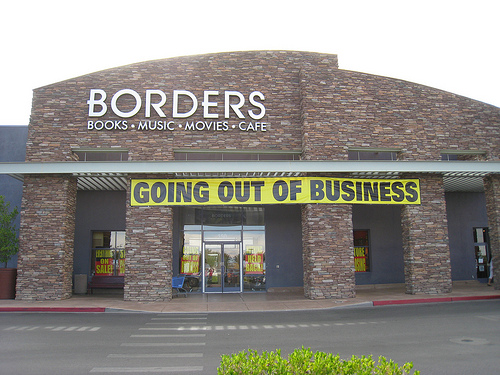
Borders began 40 years ago as a single store in Ann Arbor, Michigan, proceeded to go public and reach an all time share price of $44.88 in 1997, and was out of business by 2011. Though their innovative inventory management system was the “envy of the industry” in 1995, they failed to adapt to the digital age, ignored changes in consumer preferences, and had some questionable interactions with Amazon. While the entire brick-and-mortar book selling industry has hit hard times with the rise of e-marketplaces like Amazon, Borders was at least slightly more well diversified, with music, movies, and e-reader sales. Borders also had the potential to move a large portion of sales online, only they partnered with a rival to provide their online sales. Yes, from 2001 to 2008 Borders outsourced their website to Amazon, shutting down their potential to have their own online presence. While effectively nixing their online presence, Borders continued to expand their store space (and thus potential profit), yet managed not to fill their stores with products their customers were interested in. A continued reliance on CD and DVD offerings after users were heading online for entertainment, as well as a new categorization system for products that put large publishers before small presses eroded one of the largest reasons customers still go to brick-and-mortar stores: quality curated products. As Borders filed for bankruptcy, many stores were costing the company $2 million a week to keep running, in the end Borders closed its remaining 399 stores and laid off 11,000 people.